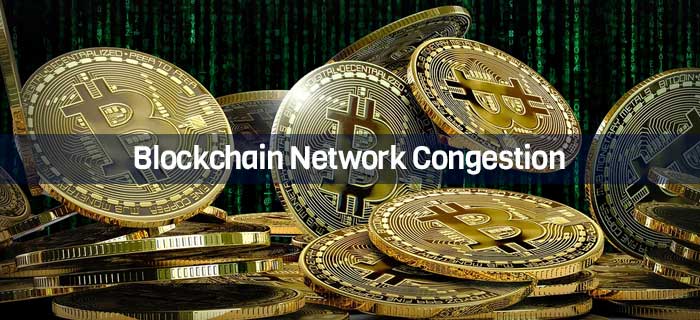As blockchain technology continues to be adopted widely, network congestion has become a concern for users and developers. It causes increased processing times, leading to unusual transaction delays.
On top of that, congestion also leads to higher fees, making simple transactions like 0.08 ETH to USD costly. In this article, we will look at how blockchain network congestion arises, its causes, and its impact on transactions.
Understanding Blockchain Network Congestion
Block network congestion happens when the number of transactions is higher than its capacity to process these transactions promptly. This is caused by market volatility and blockchain features such as block size and time.
In crypto, there is a cap to the number of transactions that can be added to a single block in the “chain.” When this number is exceeded, the network effectively becomes congested. All these factors clog the network, causing unprocessed transactions to pile up.
Causes of Blockchain Network Congestion
Both external and internal factors cause blockchain network congestion. Some of the common issues include:
Surge in Demand
One of the primary causes of congestion is a surge in demand for transactions. This often happens when there is a sudden increase in cryptocurrency trading.
Besides trading, decentralized finance (DeFi) platforms and DApps further clog the network. Again, when smart contracts are executed simultaneously, it can add more strain, causing a blockchain overload.
On top of that, blockchain networks have to deal with bad actors. Similar to how DDoS attacks happen, some individuals send a high number of unnecessary transactions aiming to derail the blockchain. It significantly affects network resources such as internet speeds, slowing down the flow of data and causing congestion.
Small Block Size
Small block sizes can also cause network congestion, especially when the market is volatile. They keep the number of transactions that can be added constantly low, whether or not there’s a surge in demand.
Different blockchains have different block sizes. For example, Bitcoin blocks support up to 4 Mb, after which congestion occurs. The blockchain started at a minuscule 1 MB and moved to the current size after the Segregated Witness (SegWit) upgrade.
On the other hand, Ethereum block sizes are more flexible and only limited by the amount of gas. The target block size is 15 million gas, but it increases in response to network demand to as much as twice the target block size. Despite Ethereum having larger block sizes, congestion will still ensue if its maximum of 30 million gas is exceeded.
Slow Block Times
The interval at which new blocks are added is also significant. When the speed at which new transactions are being initiated is more than the rate at which new blocks are created, then you can expect network congestion to occur.
Like block sizes, block time varies between different cryptocurrencies. For instance, Ethereum takes around 15 seconds, while Bitcoin is much slower, with a block time of 10 minutes.
Impact on Transactions
Network congestion is one of the main reasons slowing down blockchain adoption. Some of its impacts include:
Delayed Confirmations
When the network is congested, transactions will take longer to be confirmed. This can be frustrating, especially if you want a quick transfer. Slow transactions also discourage businesses from fully embracing cryptocurrency.
High Transaction Fees
Blockchain network congestion increases transaction fees, making small transactions impractical. Most cryptocurrencies use dynamic fees that allow users to expedite their transactions by paying high fees. While this may be beneficial in the short term and for large transactions, the costs can pile up in the end.
My Name is Hazel. I like to write about , finance, Tech, Software’s & more. Other then that i love football & travelling new places.







